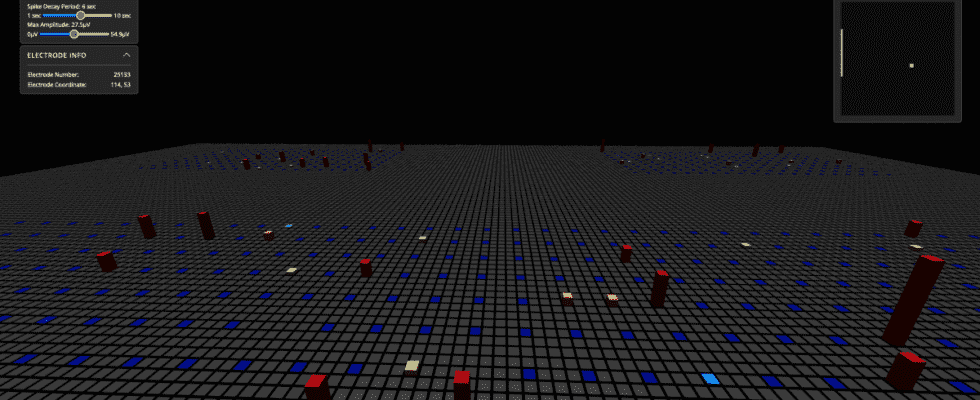The results have not yet been verified by independent scientists, but what the Australian start-up Cortical Labs described in a preprint in December could prove to be a real technical breakthrough. The Australians connected several hundred thousand neurons, which they kept alive in a bioreactor, to electrodes and successfully trained the cell layer to play the video game “Pong”.
For Hon Weng Chong, CEO and one of the two founders of Cortical Labs from Melbourne, silicon chips are at best a “transition technology”. “The human brain is the only really intelligent computer we know,” he says. The world in which we live is extremely variable and normally we have little uncertain information about this environment. Nevertheless, biological beings are very good at dealing with this uncertainty. “Why shouldn’t we use that?” Asks Chong.
To tap this capacity of biological neurons, the Australians have developed a bioreactor in which neurons – originally from mouse embryos, but now also neurons from pluripotent human stem cells – grow on a grid of electrodes. They are constantly supplied with fresh nutrient fluid.
Organization of neural systems
To control the networking of the cells so that they can solve specific tasks, the Australians use an idea from neuroscientist Karl Friston: the principle of free energy. The basic idea is that neural systems organize themselves in such a way that they maximize the predictability of a stimulus. Every living being tries to use as little energy as possible. This also applies to the processing of sensory stimuli. Before the sensory stimulus arrives, every brain tries to predict what will come next. If the perception deviates from the prediction, a stimulus arises to reorganize the connections in the brain. This concept originally comes from theoretical thermodynamics. Friston first applied it to living systems that process information in the early 2000s.

In mid-2020, the cell layers at Cortical Labs were just able to move the paddle. In the meantime, however, the researchers have made much further progress: They developed a feedback protocol that gave the cell layer that played pong against a reflective wall a random feedback signal every time it shot the ball out of bounds (visualized below).
If you have problems playing the video, please activate JavaScript
(Source: Cortical Labs)
Human neurons perform better than those of mice
After around five minutes of play, the cells showed significantly fewer failures and held the ball significantly longer than the comparison experiments. It is also noteworthy that the cultures with human neurons perform better than those of mice. The researchers suspect that this is due to the better networking ability of human neurons. However, experiments on consecutive days showed that the cell layers apparently forgot their trained abilities each time and had to be trained again.
However, one must take into account that cortical cells “are not specialized in long-term memory,” the researchers write. In this respect, this restriction was to be expected. It is noteworthy, however, that the “incredibly simple 2D structure even compared to small organisms” was able to learn extremely quickly. The development of a “synthetic biological intelligence” (SBI) is now “within reach of human innovation”.
(wst)

